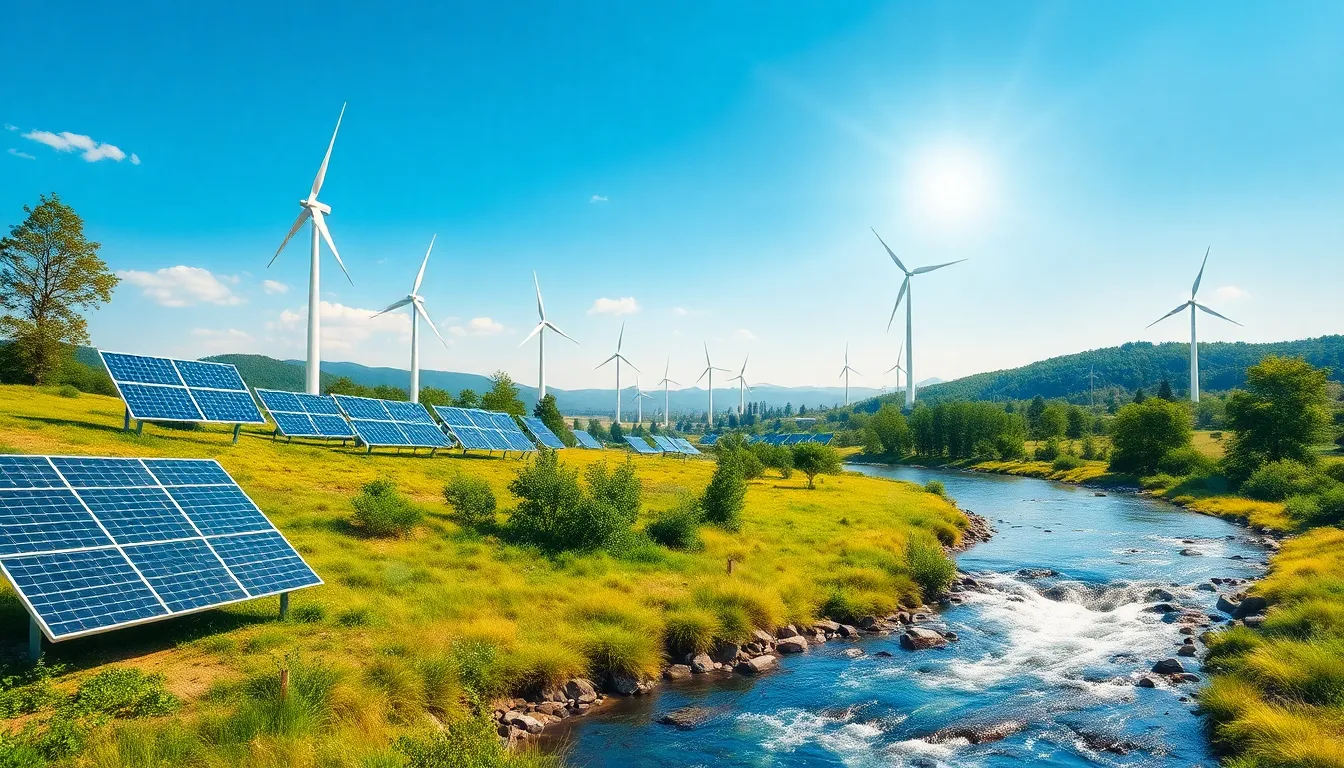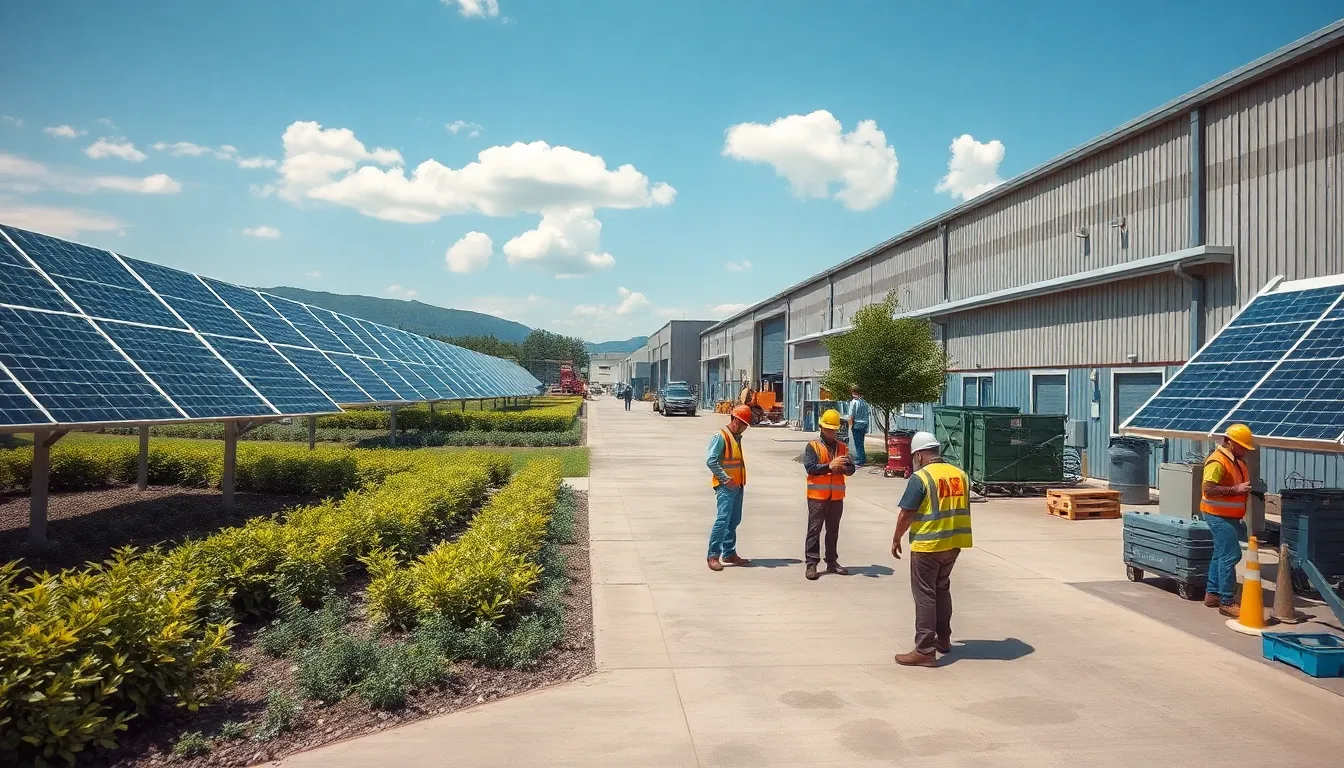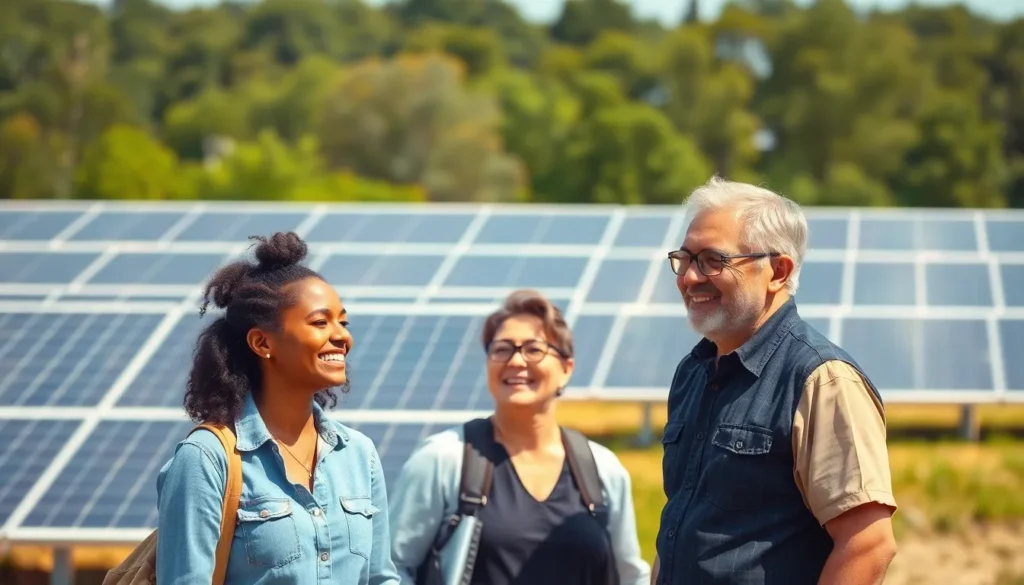Table of Contents
ToggleIn a world where fossil fuels are becoming the villain in our environmental superhero saga, green energy steps in like a caped crusader. It’s not just about saving the planet; it’s about embracing a cleaner, smarter way to power homes and businesses. Imagine harnessing the sun’s rays or capturing the wind’s whispers to fuel your daily grind. Sounds like a sci-fi movie, right? Well, it’s happening now!
What Is Green Energy?
Green energy refers to energy derived from renewable sources that have minimal environmental impact. Solar energy harnesses sunlight to generate electricity, while wind energy utilizes turbines to capture wind flow. Other forms of green energy include hydroelectric power, which relies on flowing water, and geothermal energy, extracted from the Earth’s heat.
Prioritization of sustainability serves as a key characteristic of green energy. It aims to reduce dependency on fossil fuels, which contribute significantly to greenhouse gas emissions and climate change. Transitioning to green energy sources helps lower carbon footprints and promotes cleaner air.
In the realm of green energy, biomass offers another alternative, using organic materials like plant and animal waste for power generation. Each type of green energy source plays a crucial role in diversifying the energy portfolio and enhancing energy security.
Global investment in green energy has surged over the past decade, reflecting a growing commitment to renewable technologies. According to the International Energy Agency, renewable energy accounted for approximately 29% of global electricity generation in 2020, with expectations for this percentage to increase.
Adopting green energy isn’t solely about environmental benefit; it also drives economic growth. The renewable energy sector creates jobs in manufacturing, installation, and maintenance, providing substantial employment opportunities. Furthermore, many governments now offer incentives to encourage the adoption of green technologies.
Using green energy thus aligns with both ecological goals and economic benefits, paving the way for a sustainable future that addresses current energy demands responsibly.
Types Of Green Energy

Green energy encompasses various renewable sources, each with distinct characteristics and advantages. This section explores the primary types of green energy: solar, wind, and hydropower.
Solar Energy
Solar energy captures sunlight to generate electricity through photovoltaic cells or solar thermal systems. It offers a clean alternative to fossil fuels, producing no emissions during operation. Significant advancements in technology have reduced solar panel costs, making solar energy more accessible for residential and commercial use. In 2020, solar power accounted for about 3% of total global electricity generation, with this figure expected to increase as installations rise. Besides potential energy savings, solar energy promotes energy independence, reducing reliance on traditional energy sources.
Wind Energy
Wind energy harnesses atmospheric motion to produce electricity through turbines. Each turbine converts kinetic energy from moving air into mechanical energy, which is then transformed into electricity. The wind energy sector contributed approximately 7% of global electricity generation in 2020, reflecting an upward trend in installations worldwide. Wind farms, often located in open fields and coastal areas, offer significant environmental benefits, including lowered greenhouse gas emissions. Investments in wind technology create jobs and stimulate local economies, enhancing energy security.
Hydropower
Hydropower generates electricity using flowing water, typically through dams or run-of-the-river systems. This renewable source accounted for around 16% of global electricity generation in 2020, making it one of the leading contributors to renewable energy. Hydropower benefits the environment by providing a stable energy supply without harmful emissions. While implementing hydropower systems requires careful planning to minimize ecological impacts, the ability to store energy and provide grid stability remains a strong advantage. As nations continue to seek cleaner energy options, hydropower plays a crucial role in reducing fossil fuel dependency.
Benefits Of Green Energy
Green energy offers significant advantages that extend beyond just reducing reliance on fossil fuels. These benefits encompass environmental impact and economic growth.
Environmental Impact
Green energy plays a critical role in reducing greenhouse gas emissions. It significantly lowers air pollution levels when compared to fossil fuels. Transitioning to renewable sources like solar and wind minimizes ecological damage, preserving biodiversity. Sustainable energy options decrease dependency on finite resources, encouraging a circular economy. Notably, renewable energy resources contributed to about 29% of global electricity generation in 2020. This percentage reflects growing global investment in cleaner technologies. Reducing carbon footprints becomes more achievable as green energy sources proliferate. They provide cleaner alternatives that are vital for combatting climate change.
Economic Advantages
Green energy stimulates job creation across various sectors. The transition to renewable technologies opens opportunities in installation, maintenance, and manufacturing. Investments in green energy technologies lead to a shift in governmental policies toward sustainability, often resulting in incentives for businesses. Reports indicate that money allocated to renewable projects fosters economic growth. The solar and wind industries are prime examples of sectors experiencing rapid expansion. Cost reductions in these technologies make them more accessible and appealing. As job markets evolve, green energy careers attract a skilled workforce, thus enhancing the economy. Overall, green energy presents a dual advantage of ecological preservation while promoting economic resilience.
Challenges Facing Green Energy
Transitioning to green energy presents multiple challenges that require attention and resolution. Technological and regulatory hurdles stand prominently in the path of widespread adoption.
Technological Barriers
Technological advancements lag in some areas, causing slow integration of green energy solutions. Energy storage technologies, such as batteries, are critical for managing intermittent energy sources like wind and solar. High costs and limited availability of advanced storage systems hinder scalability. Additionally, grid infrastructure often lacks the capacity to handle distributed energy generation efficiently. Research and development are necessary to unlock innovations that bridge these gaps. Without strategic improvements, the full potential of green energy remains constrained.
Policy and Regulation Issues
Policy frameworks and regulatory obstacles significantly impact green energy deployment. Inconsistent policies create uncertainty for investors and developers in the renewable sector. Local, state, and federal regulations can inadvertently stifle innovation and investment. Complicated permitting processes delay project approvals, making it challenging to initiate new green energy projects. Clear, supportive policies and streamlined regulations are essential to promote progress in the renewable energy landscape. Engaging stakeholders in the policy-making process can enhance alignment between government actions and industry needs.
Future Of Green Energy
The future of green energy promises advancements that could reshape energy consumption.
Innovations on The Horizon
Significant innovations in energy technology emerge regularly. Solid-state batteries represent a breakthrough, enhancing energy storage capabilities. This development improves efficiency and reliability for renewable sources. Smart grids offer another advancement, integrating renewable energy into existing systems while optimizing resource distribution. Additionally, floating solar farms maximize space by utilizing bodies of water, generating energy without compromising land usage. Companies actively explore hydrogen fuel production as a clean energy source, further diversifying the renewable landscape.
Global Trends
Countries worldwide increasingly commit to renewable energy, evidenced by surging investments. In 2020, renewable sources accounted for about 29% of global electricity generation. Projections suggest this figure will rise significantly. Many nations set ambitious targets for carbon neutrality by 2050, accelerating the transition to green energy. Furthermore, green jobs are rapidly growing, with sectors like installation, maintenance, and manufacturing in high demand. This shift not only addresses climate change but also bolsters economic growth.
The transition to green energy represents a pivotal movement toward a sustainable future. By embracing renewable sources like solar, wind, and hydropower, society can significantly reduce its carbon footprint while fostering economic growth.
Investments in green technologies not only create jobs but also encourage innovation in energy storage and distribution. As countries aim for ambitious carbon neutrality targets, the commitment to green energy becomes crucial for both environmental preservation and economic resilience.
This journey may face challenges, but the potential rewards are immense. A cleaner, more sustainable energy landscape awaits, promising a healthier planet for future generations.







